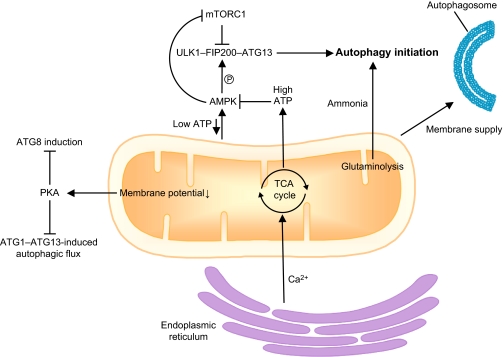Fig. 4.
Mitochondrial regulation of autophagy. Left: in yeast, loss of mitochondrial membrane potential leads to activation of PKA. PKA inhibits autophagy by repressing induction of ATG8 and by inhibiting ATG1–ATG13-induced autophagic flux. Centre: by regulating cellular ATP levels, mitochondria regulate autophagy through AMPK. When ATP levels are low, AMPK is activated and induces autophagy through direct phosphorylation of the ULK1–FIP200–ATG13 complex, and indirectly by inhibiting the suppression of autophagy by mTORC1. Ca2+ release by the ER enhances the tricarboxylic acid cycle (TCA cycle), upregulating ATP levels. Right: ammonia produced by mitochondrial-dependent glutaminolysis initiates autophagy by a non-conventional ULK1-independent mechanism. Under some conditions, the OMM can serve as a source of membrane for autophagosome biogenesis.

